Separatists Parade Military Equipment in Donetsk and Luhansk
Looking at the weapons displayed by Russia-backed separatists
Separatists Parade Military Equipment in Donetsk and Luhansk
Share this story
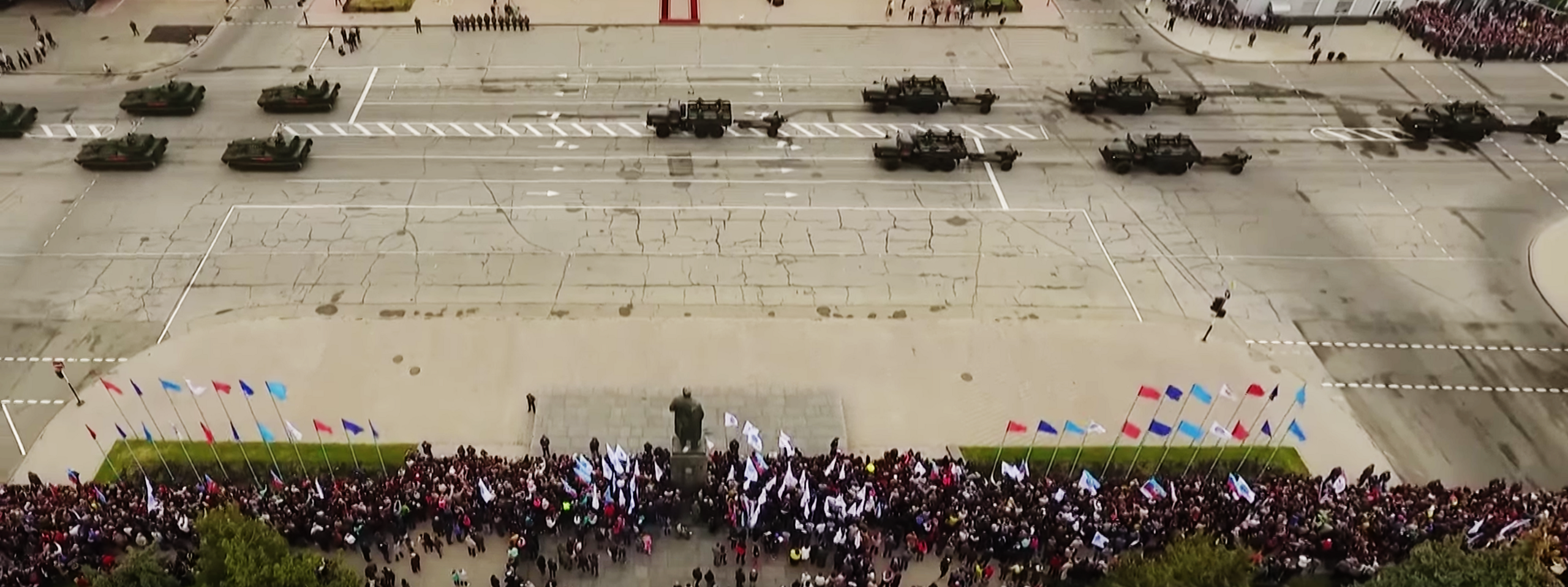
BANNER: Victory Day parade in Luhansk on May 9, 2017 (source)
Dozens of weapons were paraded through eastern Ukrainian cities on May 9 for the annual Victory Day parade, including MLRS Grad artillery systems, Strela-10 anti-aircraft missile complexes, and T-64 tanks, despite the fact that the presence of heavy weapons in these areas of Donetsk and Luhansk is forbidden under the second Minsk agreement.
Along with identifying equipment in the arsenals of the Russia-backed forces, these parades show us many of the military units active in eastern Ukraine — a particularly useful reference with the fluid nature of the military structure of the ostensibly independent separatist forces.
BMP-2
These amphibious infantry fighting vehicles are a common sight in Ukraine, used by both the Ukrainian Armed Forces and the Russia-backed separatist forces.
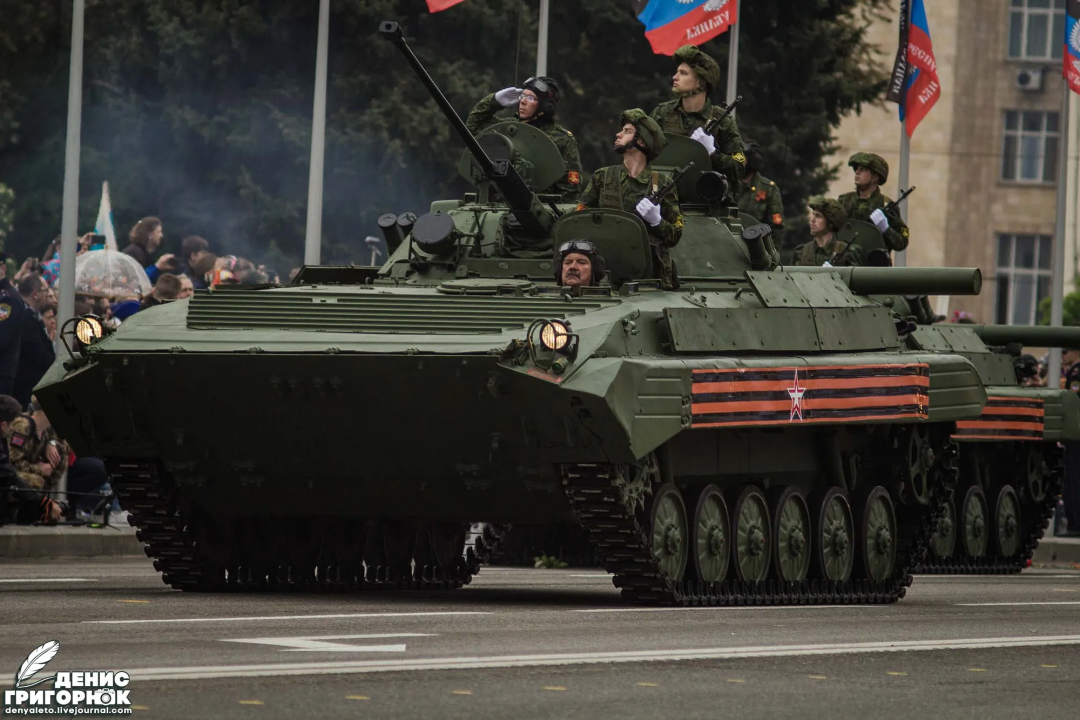
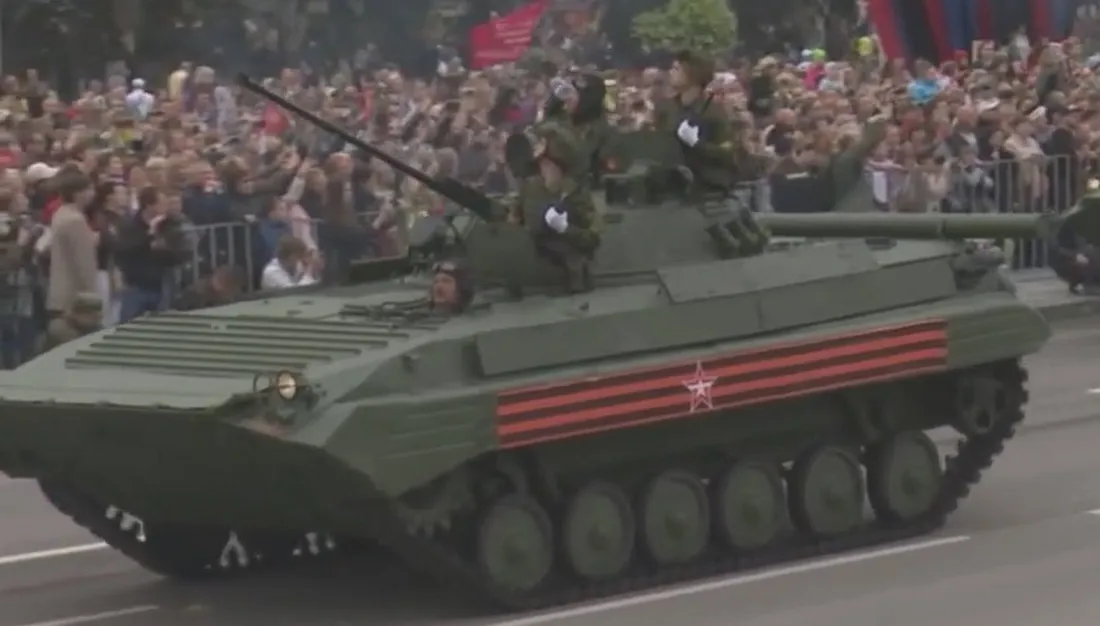

Strela-10 Anti-Aircraft Missile Complex
The 9K35 Strela-10 (NATO: SA-13 “Gopher”) is a short-range surface-to-air missile (SAM) that has frequently appeared in the three-year long conflict. Russia-backed separatist forces recently conducted training exercises for their Strela-10 systems, as detailed in a previous DFRLab report.


BM-21 Grad MLRS
One of the most destructive weapons used in the Ukrainian conflict is this 122mm multiple rocket launcher system (MLRS), which fires forty unguided rockets at a time. The Grad is an indiscriminate weapon that often results in civilian casualties.
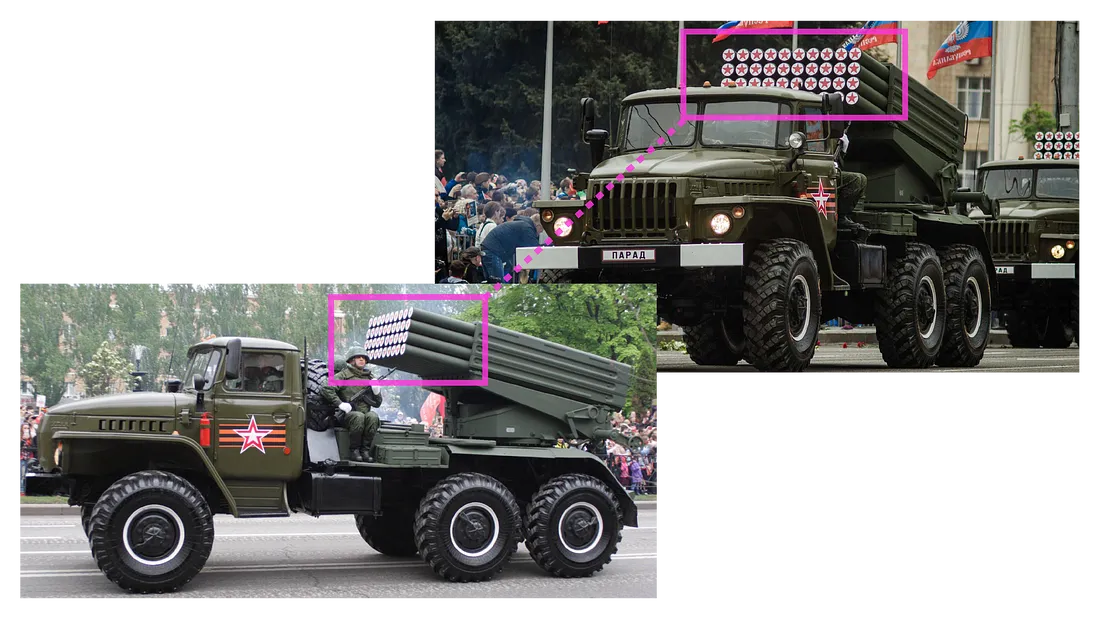
T-64 and T-72B Tanks

Two types of tanks were paraded in the Donetsk Victory Day parade: the T-64 and the T-72B (not to be confused with the exclusively Russian T-72B3).
The T-72B tank at the parade has Kontakt-1 explosive reactive armor (ERA), seen in the rectangular blocks covering the turret and body of the machine. Furthermore, the infrared (IR) searchlight is to the left of the main gun on the turret (while facing the front), while the IR searchlight is on the right of the main gun with the T-64 tanks in the parade.
Side-by-side, the two are easy to differentiate with the clear differences on the turret.


2S1 Gvozdika
Russia has provided a great number of Gvozdika self-propelled howitzers to the separatist forces that it backs, but the systems are also used in the Ukrainian Armed Forces.
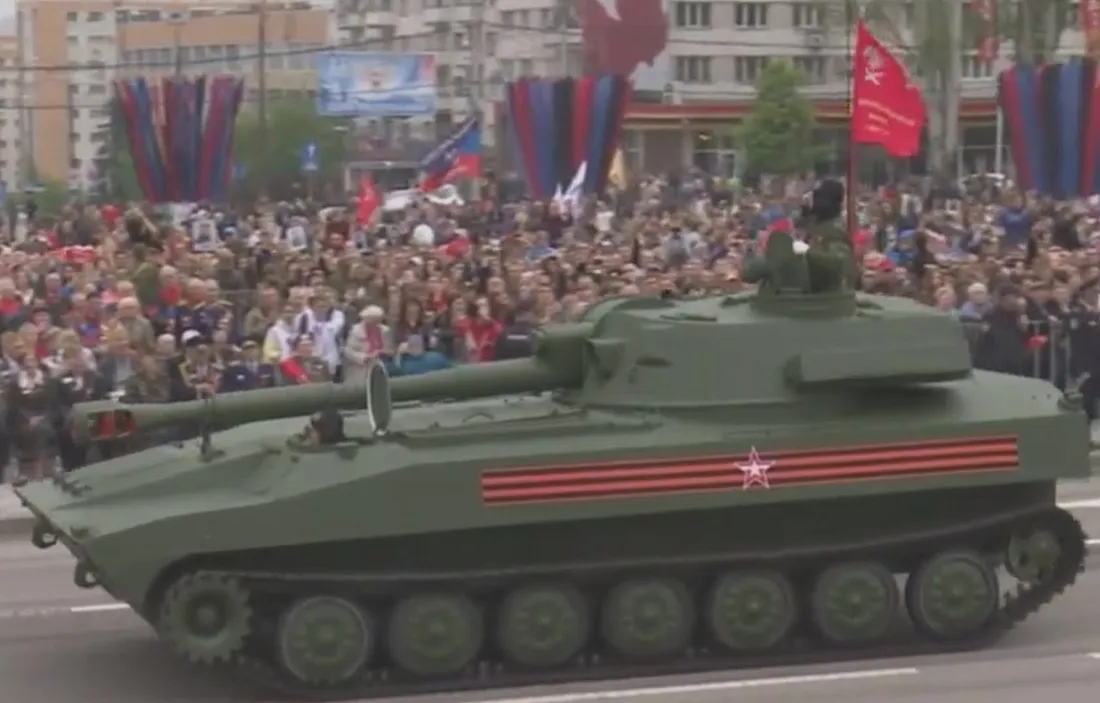
ZU 23–2
This towed anti-aircraft cannon is often mounted on trucks, but can also be unloaded and deployed on the ground. While this weapon is technically an anti-aircraft gun, it is also frequently used against ground targets, and it is especially effective against structures and lightly armored vehicles.
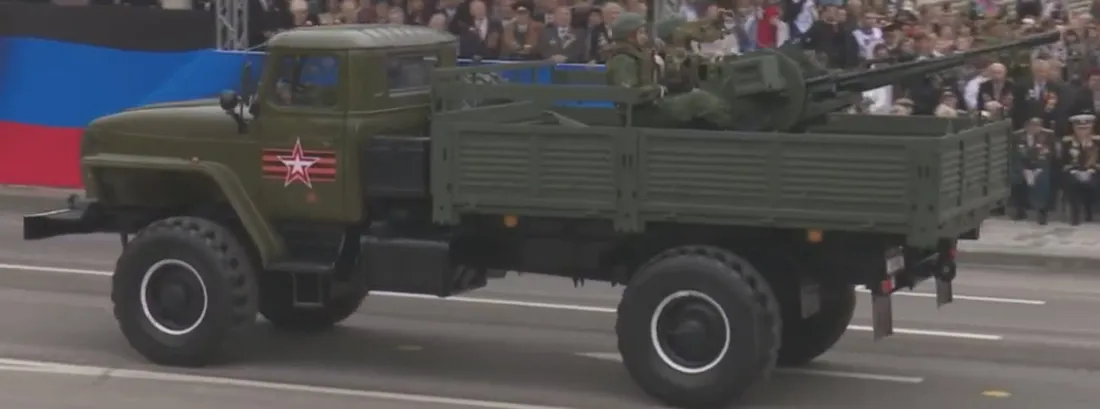
Donetsk Air Force?
Most surprisingly, a plane was displayed in central Donetsk during the Victory Day celebrations, though it was not paraded with other military equipment.
This plane is a Czech Aero L-29 Delfin, which is often used as a civil or trainer plane, but can be used in a military force — such as, reportedly, in the Georgian military. This plane was observed in transport on May 8 by many online, raising questions as to why there was small plane painted in the colors of the self-proclaimed separatist republic.
этот? pic.twitter.com/cpAFlENq4s
— Hochu dodomu v UA (@hochu_dodomu) May 8, 2017
While this plane could be used by the armed forces of the Russia-backed separatist, it is far more likely that the plane was just brought out as more of a novelty than display of strength.

Similarly, in 2015, the self-proclaimed Luhansk People’s Republic showed off its “air force” with an SU-25 jet. Over two years since this display, the jet has never been used in a combat operation.
Military units
Along with the heavy military equipment, we can also identify some of the military units present at the events. For example, below we can see two soldiers from the Donetsk-based “Kalmius” artillery brigade, and the Donetsk-based “Kramatorskiy” commandant’s regiment.
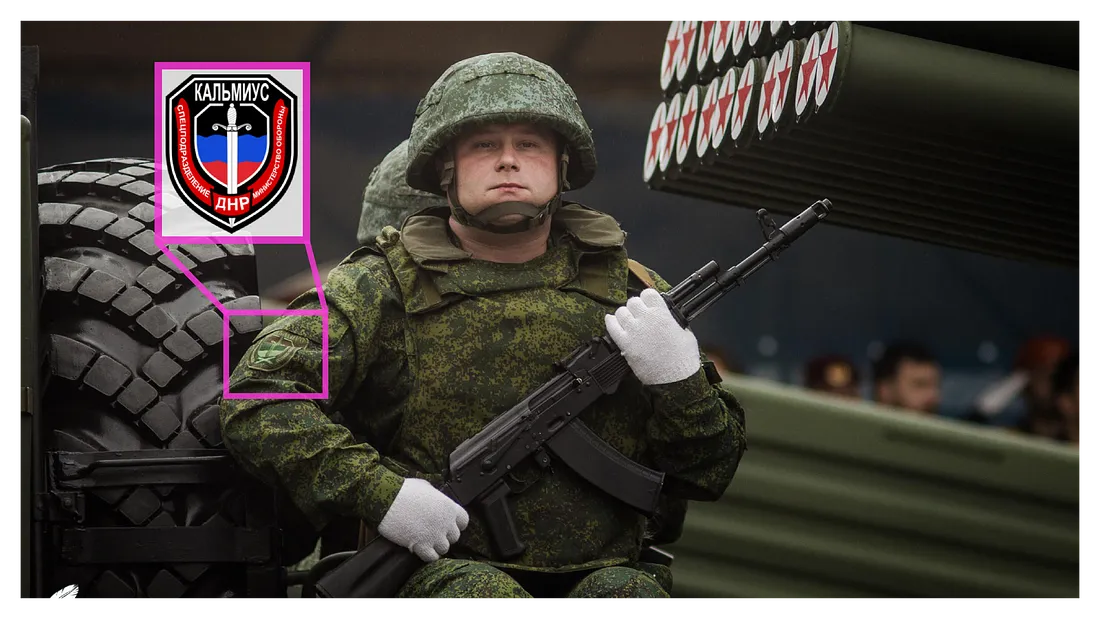
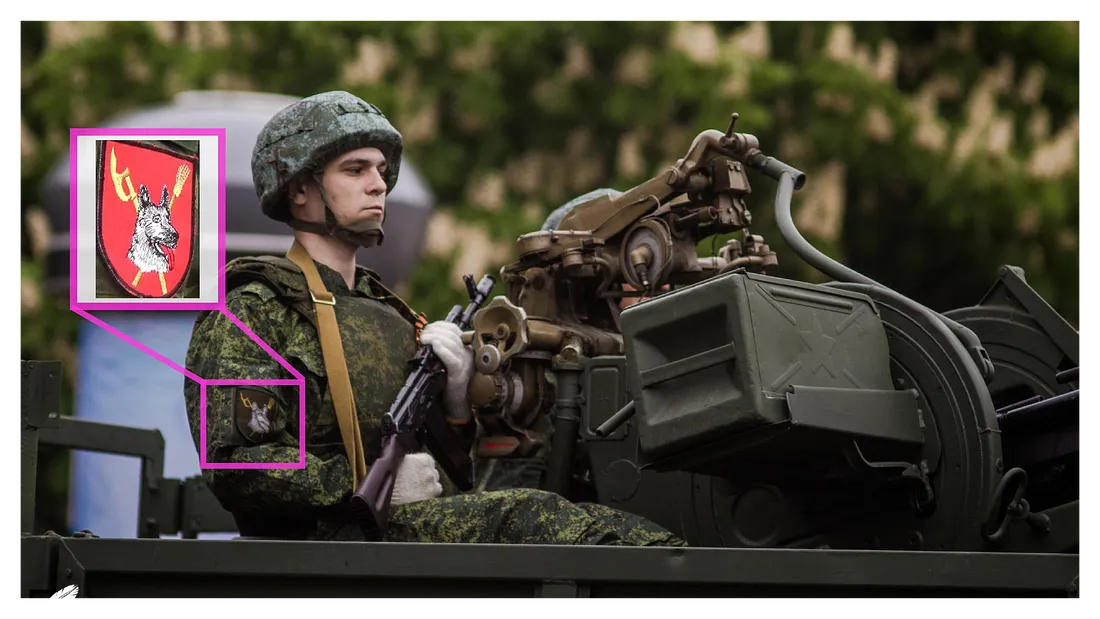
Conclusion
While the military equipment displayed during the Victory Day parades was not used during Victory Day, its location in central Donetsk and Luhansk is still forbidden by the Minsk Agreements. The Minsk Agreements stipulate the withdrawal of heavy weapons to create a security zone, distancing the sides from the line of contact. The OSCE Special Monitoring Mission (SMM) regularly monitors the status of the withdrawal of heavy weapons as part of the implementation of the Memorandum, the Package of Measures, and its Addendum.
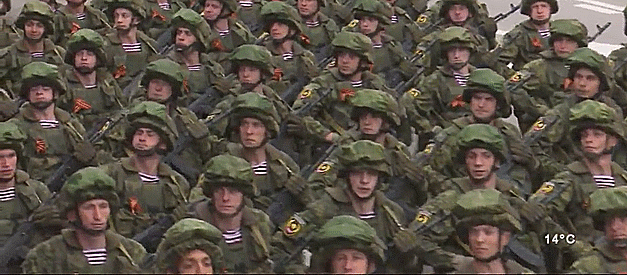
The SMM daily reports always include a section on the withdrawal of weapons, providing concrete verified evidence of the fact that both sides have failed to comply with this key part of the agreements.

